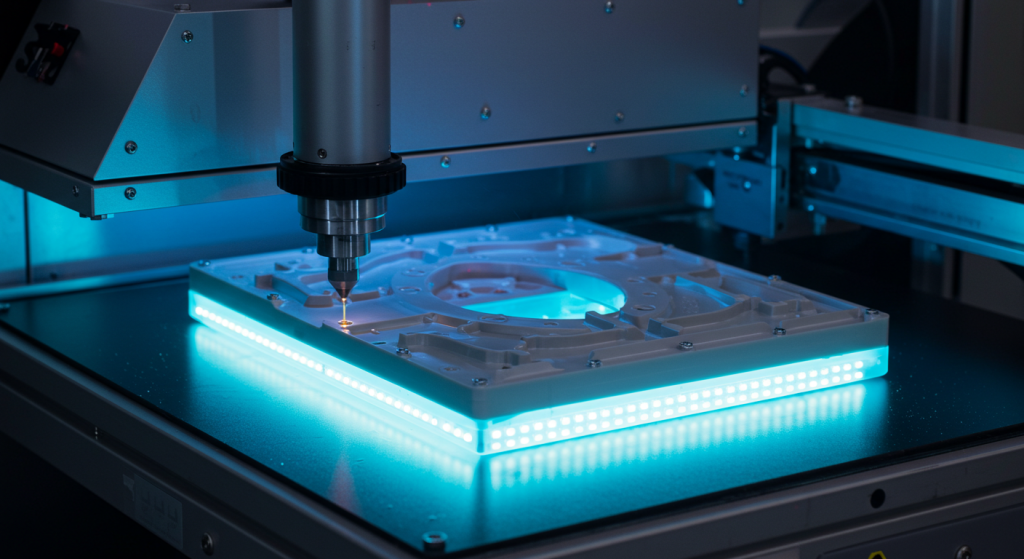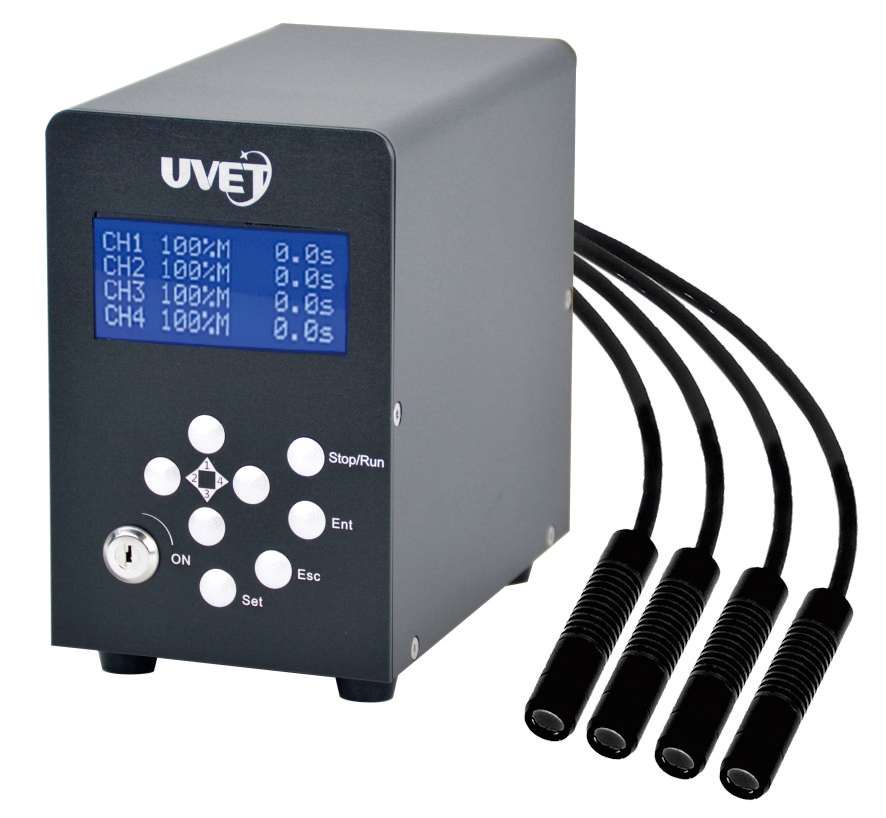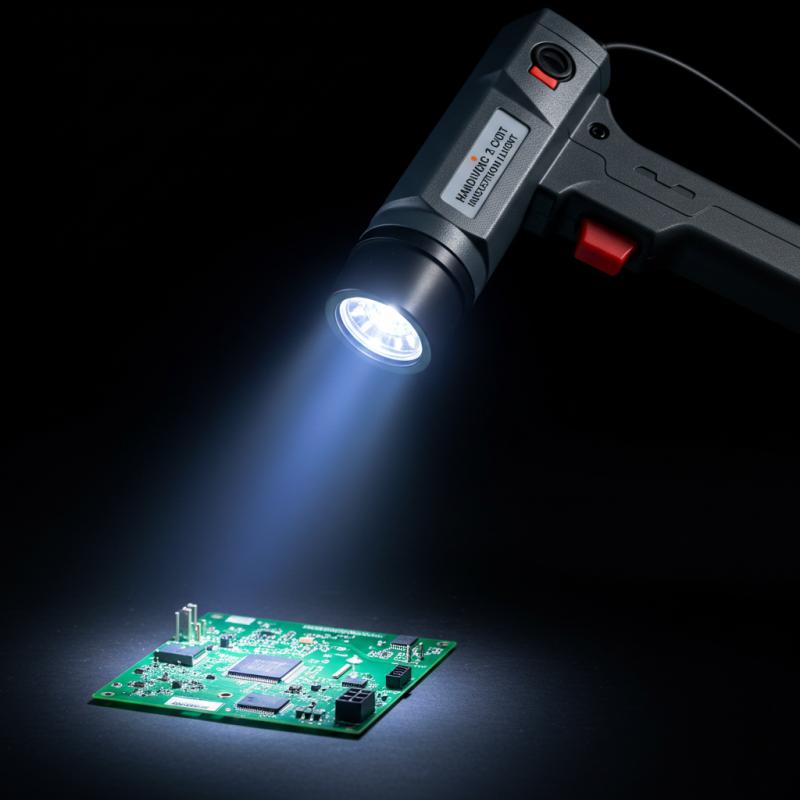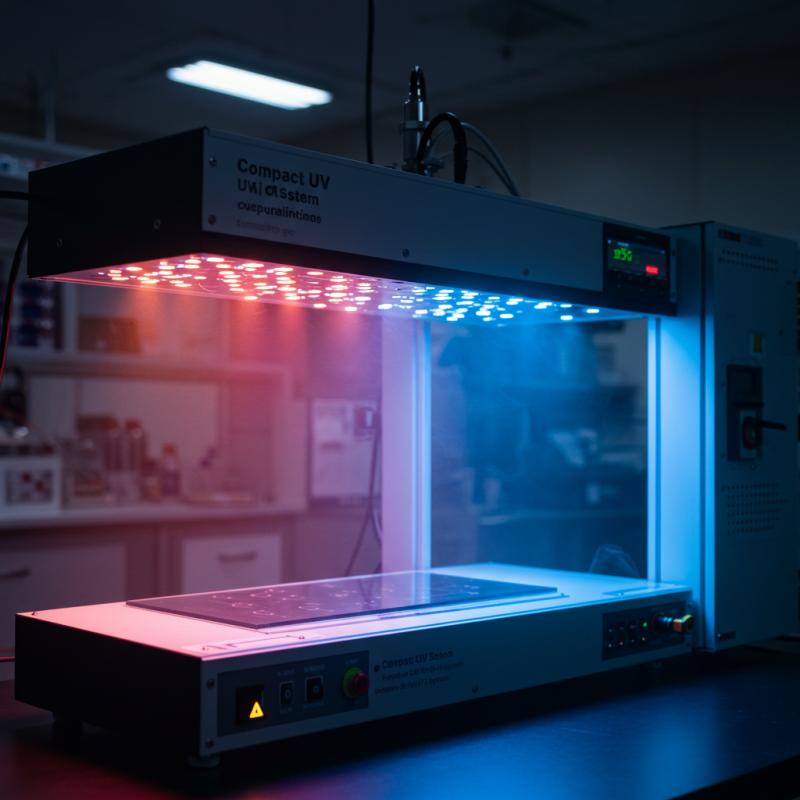How Effective is UV LED Area Curing? Industrial Settings
What is the Efficacy Of UV LED Area Curing?
How effective is UV LED area curing? UV area curing systems have improved photopolymerization, and these systems are gaining acceptance across sectors such as electronics, automotive, printing, and medical device manufacturing due to their low cost, dependability, energy efficiency, and fast curing speeds. In this case, we will delve into the specifics of its effectiveness, key performance metrics, use cases, benefits, and other details related to this developing curing technology.
UV LED Area Curing Overview
For area curing with UV LEDs, photosensitive materials are cured using ultraviolet light from LED sources over a designated area. Unlike spot curing, it has a wider working surface. This methodology is best suited for coatings, flat substrates, adhesives, and inks.
The core of this approach is photopolymerization. It is a process initiated by UV light that causes liquid materials to solidify almost instantaneously through a chemical reaction.
What is the Benefit of Using UV LED Over Mercury Lamps?
These are the benefits UV LED systems have over mercury vapor lamps:
• No warm-up time needed for immediate on/off switch
• Upwards of 20,000 hours of use means a longer lifespan
• Reduced energy consumption while operating at cool temperatures ideal for sensitive materials.
Effectiveness Key Metrics
1. Cure Speed
The productivity of the business processes is augmented substantially with the use of UV LED systems to cure adhesives and coatings, as it can be done in milliseconds. This leads to shorter cycle times.
• Take, for instance, acrylic-based adhesives, which are fully cured in under 1 second with exposure to 395nm LEDs with an irradiance of 200 mW/cm².
2. Cure Depth
The effectiveness of cure depth relies on irradiance and wavelength. The shorter the wavelength, the better the penetrating ability (for example, 365nm), and is therefore better for thicker layers.
3. Energy Efficiency
With mercury bulb-based systems, UV LED systems provide 70% of the energy efficiency.
• The effectiveness of contemporary arrays can surpass 30% electrical-to-optical, thereby offering a considerable opportunity for total energy efficiency.
4. Dose and Irradiance
• Irradiance: Measured as the power of energy supplied in a certain area (mW/cm²).
• Dose: Measurement of energy used and delivered over time (mJ/cm²).
As with many processes, automation requires consistency, and this is best achieved with high uniform irradiance across the surface.
5. Uniformity of Cure
Utilizing UV LED area curing with precision optics yields over 90% exposure field uniformity. This balance minimizes under- and over-curing, thus reducing defects.

Electronics Manufacturing
UV LED area curing exhibits fast curing under low temperatures, which is beneficial for coatings on PCBs.
Medical Device Assembly
Catheters, syringes, and other thermally sensitive disposables are best suited for this technology.
Automotive Industry
Gasket sealing, lens bonding, and treatments on interior components are done with Thermal Spray Coatings are coated and bonded with UV light.
Graphic Arts
The adhesion of ink, which is dried with inkjet UV LED curing, is impressive on many materials as well as providing a vibrant color.
3D Printing
Post-curing with UV LEDs enhances mechanical properties like strength, surface finish, and dimensional stability.
Benefits of UV LED Area Curing
1. Enhanced Efficiency
Immediate engagement raises productivity due to the reduction of cycle times, which improves throughput across all lines of manufacturing.
2. Improved Quality
Uniform curing mitigates defects associated with shrinkage, incomplete bonding, and surface irregularities.
3. Energy and Cost Savings
Over time, operating expenses will decline due to power savings and reduced maintenance UV costs associated with LEDs.
4. Environmental Impact
No mercury, ozone emissions, or excessive heat make this technology safer and greener.
5. Preservation of Heat-Sensitive Materials
The preservation of substrates is improved with cooler curing temperatures.
Technical Problems and Solutions
Under-Curing
Cause: Low irradiance or incorrect wavelength.
Solution: Use an LED at the appropriate photoinitiator absorption peak and optimize time and distance.
Over-Curing
Cause: Too much UV radiation or heat accumulation.
Solution: Smart process control with integrated sensors.
Adhesion Failures
Surface contamination or incompatibility with the substrate material causes these failures.
Solution: Surface decontamination and material compatibility tests.
Methods Offer Multi-Layered Evidence
• Spectrophotometry examines the chemical bond alterations, verifying polymerization and confirming effectiveness.
• Tack testing measures surface dryness and confirms effectiveness.
• Adhesion testing evaluates the pull-off strength post-cure and assesses breakaway force.
• Cure depth evaluation through slicing layered samples.
Well-calibrated systems improve repeatability and reliability.
Best Practices for Optimization
The right selection of wavelength enhances efficiency. 365nm sparks deep curing, whilst 395nm activates surface-level curing. Active thermal management ensures consistency in performance. Water-cooled modules deliver reliable performance.
• Monitoring outcomes: The quality improves when the results are monitored continuously.
• Make sure LEDs are placed correctly: The distance between the curing area and the LED should be the same.
Which Industrial Applications is UV LED Area Curing Most Useful?
The adoption of UV LED area curing is expanding across various industrial applications. It ranges from electronic device manufacturing to automotive paints, where this technology offers precision and quality curing within expected timelines.
Precision and Speed of Curing
UV LED systems offer instantaneous and rapid curing compared to older mercury lamps. Furthermore, it offers precision in the depth of curing, making these systems ideal for adhesives, inks, and coatings used in the medical devices and graphic arts industries.
Cost-Effectiveness and Energy Efficiency
The other benefit provided is the use of UV LED modules, which offer lower energy consumption. This will lower operational costs due to lower maintenance needs and less overall generated heat. This is beneficial when curing heat-sensitive materials.
Quality and Consistency
The most recent area UV LED systems offer greater uniformity with regard to light distribution, which improves the uniformity of the cure. This improves durability and adhesion strength while reducing defects, which increases productivity and yield.
Dependable Performance in Practice
The industrial applications of UV LED curing systems showcase excellent process precision, system longevity, and reliability. Moreover, these systems are environmentally friendly because they do not contain any mercury and help avoid under-curing issues.
Cost-Effectiveness of UV LED Area Curing Systems
The investment may seem steep at first, but UV LED curing systems pay for themselves over time because of:
• Reduced QC issues
• Lower production downtime
• Limited operational interruptions
Conclusion
How effective is UV LED area curing? The answer is that it is very effective when proper parameters and system configurations are used. Across multiple industries, UV LED area curing systems deliver speedy, reliable, and environmentally friendly processes while being economical. It enhances the quality of products, lowers operational costs, and simplifies the integration of automation. Review the UVET product catalog for sophisticated and cutting-edge curing solutions.






